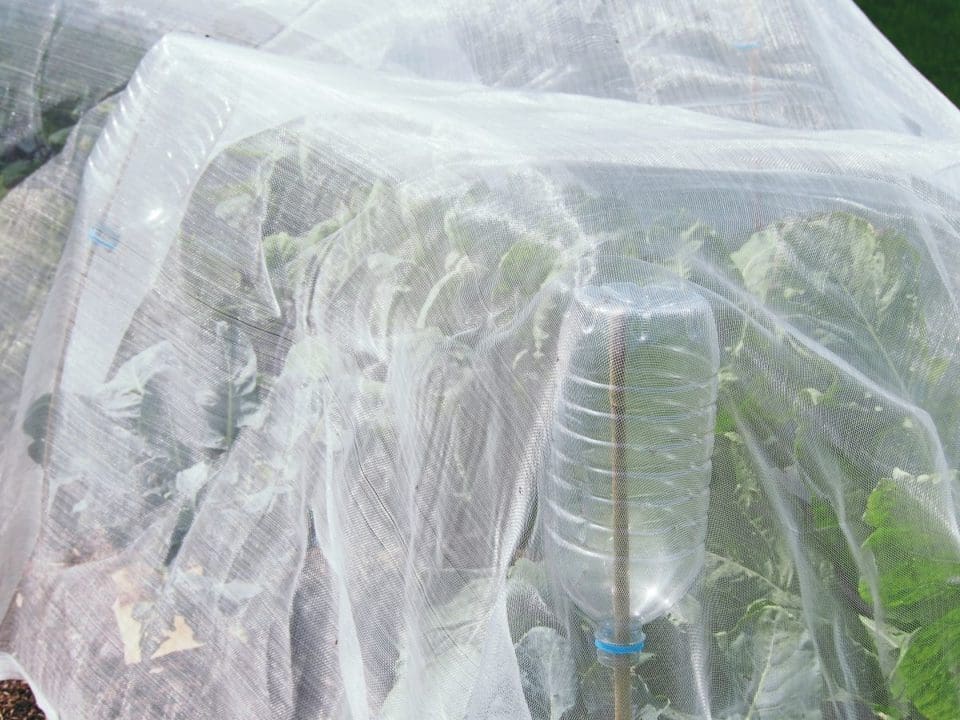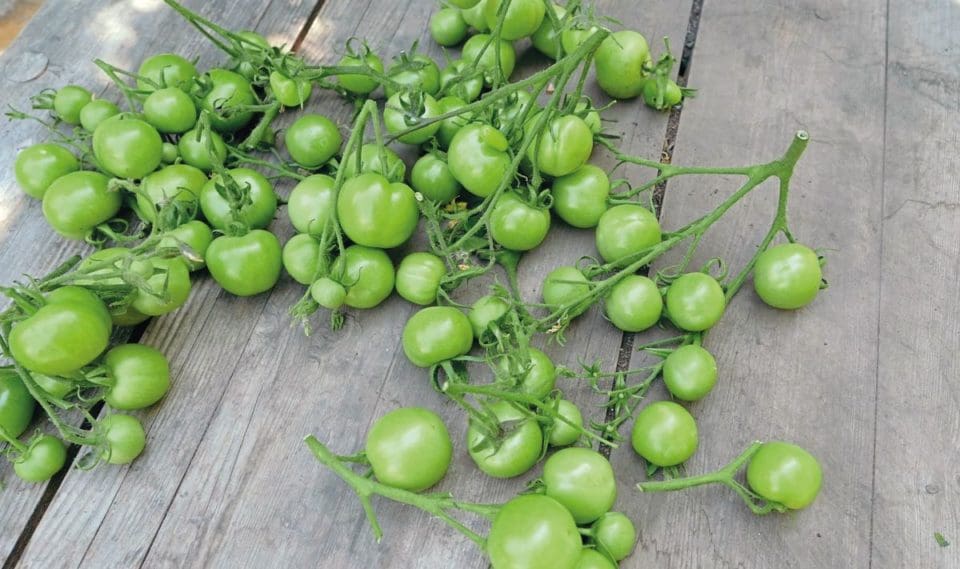Ben Vanheems shares some essential tasks to carry out in your garden and allotment for October.
SOW NOW
Broad beans, cauliflower, peas
PLANT NOW
Spring cabbage, garlic, onion sets, salad leaves, strawberries
Enjoy more Kitchen Garden reading in the monthly magazine.
Click here to subscribe & save.
HARVEST
Aubergine, beetroot, Brussels sprouts, endive, French and runner beans, broccoli, cabbage, carrots, cauliflower, celery, celeriac, chicory, chillies and peppers, courgettes, cucumber, Florence fennel, kohl rabi, leeks, lettuce, oriental leaves, parsnip, peas, potatoes, radish, salad leaves, spinach, spring onion, squash, strawberries, sweet potato, swede, Swiss chard, tomatoes, turnips
Cure squashes!
October gives us the first real taste of autumn, and with it a celebration of that most hearty family of vegetables, the squashes.
Courgettes are nearly done for the season, so why not leave a few to grow into full-sized marrows? They’re fantastic stuffed – split lengthways and hollowed out into boats for your favourite filling, or as scooped-out slices. Eat them up within a few weeks of cutting.
Winter squashes and pumpkins will store for months so long as they are cured after harvesting. Cut them off with at least 10cm (4in) of stem and bring fruits indoors if anything but a light frost threatens. Never carry fruits by the stem because if it snaps off, you’re inviting disease.
Finish curing on a sunny windowsill or in a greenhouse. Rotate and flip fruits over three to four weeks so that all areas of the skin harden, sealing in the precious flesh beneath. Store cured fruits at a cool room temperature.
Clear old crops
Lift up and clear away spent crops to the compost heap. Cut up or shred tough or thick stems such as sweetcorn to speed up their decomposition.
Plant strawberries
This is your last chance to plant strawberries. Get them in as soon as possible to give plants more time to establish, boosting chances of a good crop next year.
Position cloches
Cover late salads and oriental leaves with horticultural fleece, cloches or miniature tunnels to extend the season and the amount you can pick.
Stake Brussels sprouts
If your Brussels sprouts are leaning precariously to one side, tie them to sturdy upright stakes. Alternatively, earth up around the stems to offer extra support at ground level.
Sow early peas
STEP 1: Sow hardy peas for picking as soon as May direct into well-drained soil in a sunny spot. Sow two parallel rows spaced 20cm (8in) apart, setting the seeds 3cm (1in) deep and 10cm (4in) apart within the row. Cover with cloches to protect from the cold.
STEP 2: Pests such as mice may sometimes eat the seeds. To avoid this you can sow under cover into lengths of guttering or deep modules such as these Rootrainers, which encourage longer roots. Keep the compost moist but not too wet as you don’t want the seeds to rot.
STEP 3: Plant seedlings out in spring at the same distance apart as direct-sown peas. Seedlings will need supporting. Use pea sticks (any branched prunings), netting or chicken wire – in this photo secured against a frame made from the side of an old cot.
Protect brassicas

Pigeons will show an interest in brassicas like broccoli and kale the moment temperatures drop and wild food becomes less abundant. Cover vulnerable crops with netting to keep them off. The simplest way to support netting is to lay it over uprights, capped with upturned bottles to stop the netting slipping through or tearing. Secure at ground level to stop birds walking in or getting trapped. Heads of autumn cauliflower can be damaged by frost, so cover plants with fleece or tie the outer leaves closed around developing heads to keep them snug.
Pests & Problems
■ CABBAGE APHIDS: Don’t forget to look under the leaves for clusters of these well-camouflaged aphids. Blast off smaller clusters with a strong jet of water. Clear away brassica crops as soon as they are finished to prevent the aphids overwintering.
■ DEAD LEAVES: Pick off dead and yellowing leaves to deny hiding places for pests and the risk of diseases such as grey mould from spreading. Fallen leaves showing any signs of rust or scab should be put out for collection rather than composted at home.
■ WINTER MOTHS: As their name implies, winter moths remain active throughout winter. Tie on grease bands around fruit tree trunks to stop the females from climbing up and laying their eggs in the canopy and the caterpillars from eating the leaves in spring.
Under cover
Last pickings
Now is your last chance to harvest summer staples such as tomatoes, cucumbers and aubergines. As the light levels drop and temperatures become less reliable, plants will slow to a crawl. Harvest what you can then lift up and clear away plants to the compost heap so the space can be better used for hardy crops like winter salads.
Peppers and chillies will continue growing well into autumn, so leave these to grow on for as long as possible, continuing to feed plants while they are still actively growing and picking fruits as they mature. With a little bit of skill these shrubby perennials can be overwintered to give bigger and better plants for next growing season.
Check for damage
Autumn heralds the start of stormier weather. Check your greenhouse or polytunnel for any damage and make repairs now, before the weather turns too windy. Replace broken or missing panes with new. Remove the clips holding the old pane in place, check and clean the seal on the aluminium frame then clip the new pane into position.
Repair torn polythene with repair tape, which can also be used to make small glass cracks safe. Repair tape is thick, strong and UV stabilised so it should last for the duration of the polythene cover. Stick a crisscross of tape over the tear, on both the inside and outside of the structure to give a good seal.
Ripen green tomatoes

STEP 1: Sort through your tomatoes to separate out the smaller, very pale fruits from the larger, darker green tomatoes and those showing the first hints of colour. The small, pale fruits are unlikely to ripen, so use these up to make, for example, a green tomato chutney.
STEP 2: Bring your larger, darker tomatoes indoors to finish ripening. Pop them into a drawer, lidded cardboard box or large paper bag along with a banana, which will speed up ripening. They do not need light to ripen at this stage, just the gentle background warmth of being indoors.
STEP 3: If you have lots of tomatoes try staggering ripening. Hang trusses of green tomatoes somewhere cool (10-13C/50-55F is ideal), dry, dark, and well-ventilated such as a garage or shed then bring them inside and up to room temperature to finish ripening.
Plant salads
Hardy winter salads make excellent follow-on crops from the likes of tomatoes and other summer staples. Dig over vacated beds to loosen up the soil and remove any traces of roots then top up with an inch or two of fresh compost to set plants off to a strong start. Set individual salad plants at least 20cm (8in) apart in both directions so they will receive plenty of light and resources, and to discourage slugs.
Sow salads by the first week of October if you haven’t already sown into module trays. Pick the leaves little and often, a few leaves from each plant at a time. Water sparingly once temperatures drop to avoid problems such as mildew. Suitable winter salads include chicory, endive, mustards, mizuna, winter purslane, land cress and winter varieties of lettuce.
Key Jobs for October
■ SOW CAULIFLOWER
Sow varieties of early summer cauliflower into module trays or pots of multipurpose compost, thinning to one seedling per cell. Keep under cover until the soil has warmed up in spring. Plant 60cm (2ft) apart in both directions into rich soil in a sunny position.
■ TRAP WARMTH
Finish removing any shading now that days are cooler to let in as much sunlight as possible. If you heat your greenhouse, take a moment to check the heater and make any repairs before it turns frosty. Save fuel by fixing bubble-style insulation on to the glazing.
■ BRING IN TENDER PLANTS
Don’t fall foul of the first frost – bring tender plants like lemons under cover in good time. Thoroughly inspect plants beforehand for pests and isolate and treat as needed. Space plants out to maximise both airflow and quality of light received. This will also help to reduce the disease risk.
■ MOVE CARROTS
Container crops give flexibility in how things are grown. One example is carrots, which can be kept outside on a sunny patio then brought into the greenhouse once it turns chilly. In early October there’s still just about time to sow an under cover crop of carrots to enjoy later in the winter.
 Enjoy more Kitchen Garden reading in the monthly magazine. Click here to subscribe.
Enjoy more Kitchen Garden reading in the monthly magazine. Click here to subscribe.
Sign-up to the Kitchen Garden Magazine Newsletter
Enter your e-mail address below to see a free digital back issue of Kitchen Garden Magazine and get regular updates straight to your inbox…
You can unsubscribe at any time.
About the Author
- Jobs for May - 1st May 2024
- May 2024 - 23rd April 2024
- 6 fast-growing vegetables you can harvest in less than 2 months! - 18th April 2024









